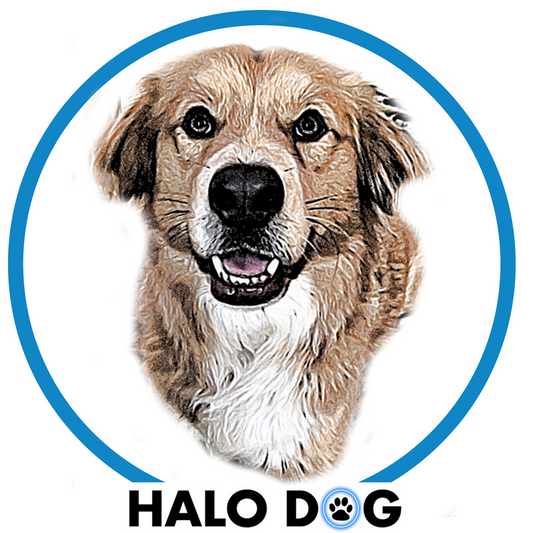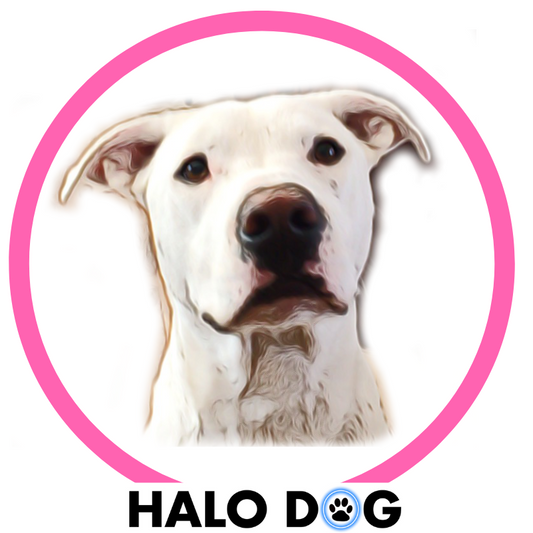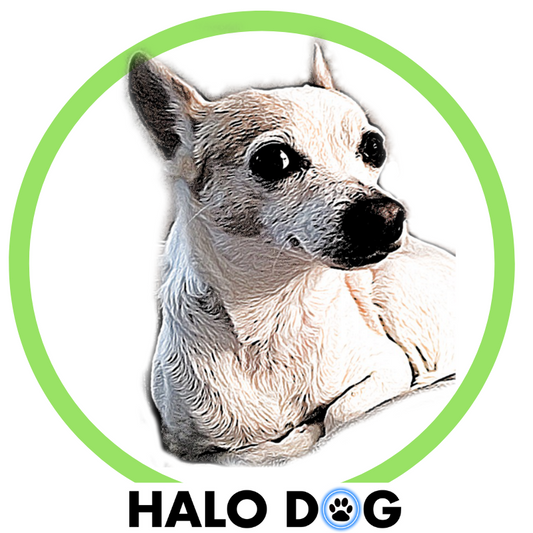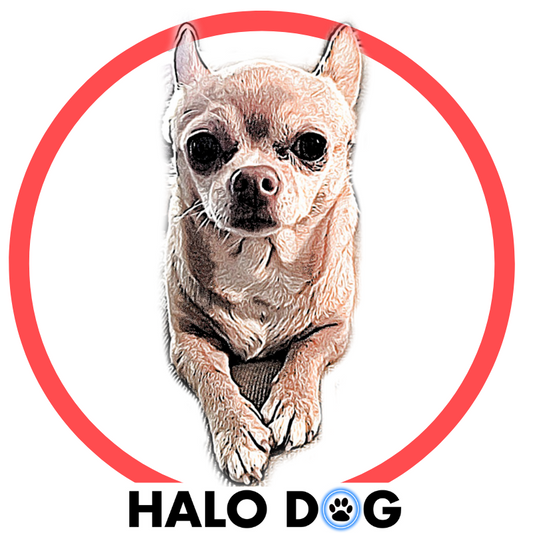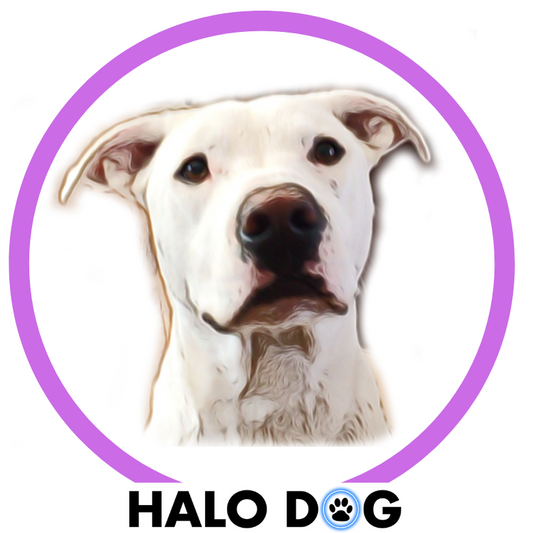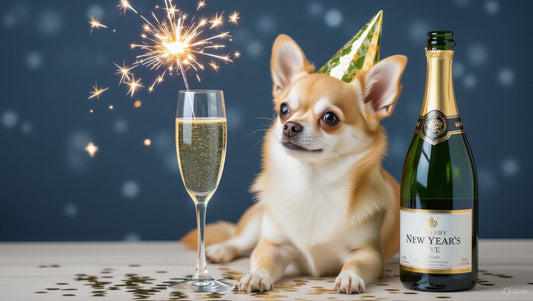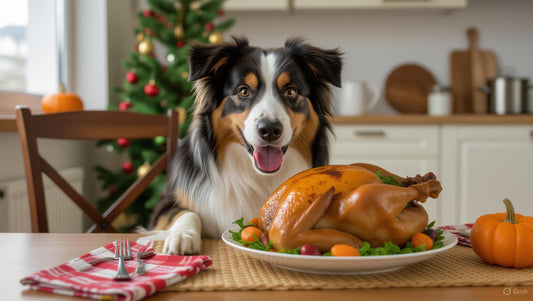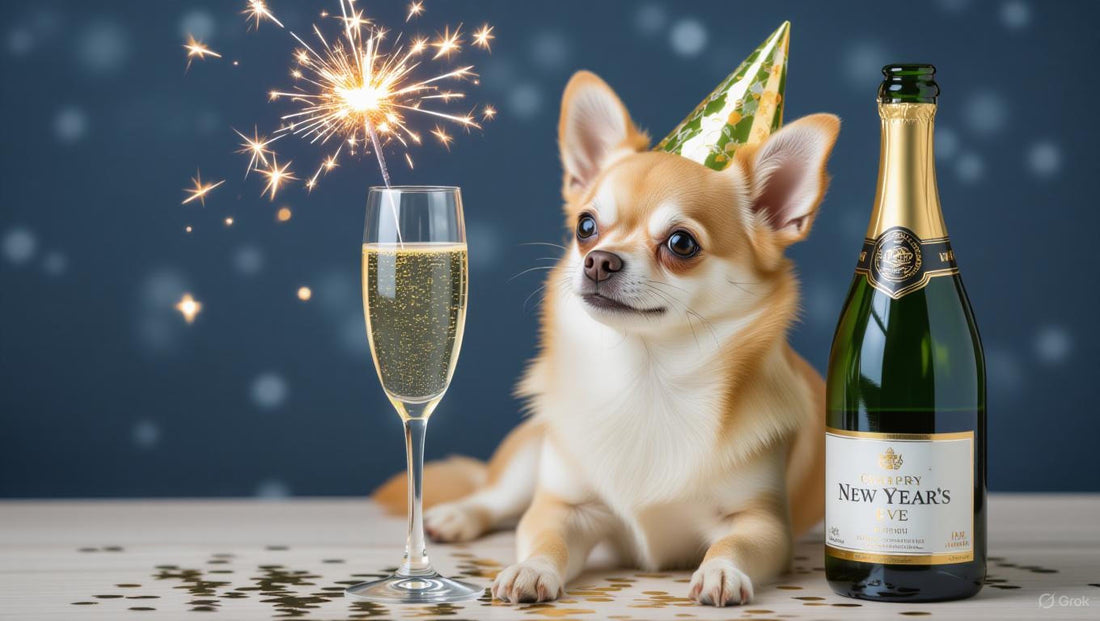
New Year's Eve Noise: Protecting Anxious Dogs from Fireworks and Loud Celebrations
Share
New Year's Eve ranks as the most stressful night of the year for dogs, with animal shelters reporting their highest intake numbers on January 1st. The combination of fireworks, noisemakers, and celebratory chaos sends millions of dogs into panic—but with the right preparation, you can help your furry friend navigate this challenging holiday safely.
The Startling Reality of New Year's Eve Pet Anxiety
Shocking Statistics:
- 45% of dogs show extreme fear responses to fireworks
- Lost pet reports increase 500% on New Year's Day
- Emergency vet visits for anxiety-related issues spike 200%
- More pets go missing on New Year's Eve than any other night
Understanding why this holiday is so traumatic for dogs is the first step in protecting them.
Why Fireworks Terrorize Dogs
The Science Behind the Fear
Physiological Responses:
- Dogs hear frequencies up to 65,000 Hz (humans only hear to 20,000 Hz)
- Sound intensity that seems moderate to us can be overwhelming to dogs
- Unpredictable timing creates constant anticipatory anxiety
- Vibrations through the ground trigger additional stress responses
Evolutionary Factors: Dogs are hardwired to respond to sudden, loud noises as potential threats. This survival instinct that once protected them now causes intense suffering during celebrations.
Noise Phobia vs. Normal Startle Response
Normal Response:
- Brief startle, then quick recovery
- May seek comfort but remains responsive
- Returns to normal behavior within minutes
Noise Phobia Indicators:
- Trembling or shaking uncontrollably
- Excessive drooling or panting
- Destructive behavior (clawing, chewing)
- Loss of bladder or bowel control
- Attempting to escape or hide
Recognizing Early Warning Signs
Many dogs begin showing anxiety symptoms hours before fireworks actually start:
Pre-Fireworks Anxiety Signs:
- Restlessness and pacing
- Refusing to eat dinner
- Clingy behavior or hiding
- Excessive panting despite cool temperatures
- Whining or unusual vocalizations
Why This Matters: Early intervention is significantly more effective than waiting until full panic sets in.
Creating the Ultimate Safe Space
Essential Elements of a Comfort Zone:
Location Selection:
- Interior room with minimal windows
- Away from likely firework viewing areas
- Familiar space where dog already feels secure
Sound Management:
- Heavy curtains or blankets over windows
- White noise machine or calming music
- TV or radio at moderate volume
- Sound-dampening materials if possible
Comfort Items:
- Favorite bed or blanket with familiar scents
- Special toys reserved for stressful situations
- Water and a few high-value treats
- Comfortable, secure collar that won't slip off during panic
Advanced Preparation Techniques:
Desensitization Protocol (Start Weeks Before):
- Play firework sounds at very low volume during positive activities
- Gradually increase volume over multiple sessions
- Pair sounds with treats and praise
- Never comfort fearful behavior—remain calm and confident
Emergency Collar Security During Panic Episodes
Critical Safety Fact: More dogs slip out of their collars during noise-related panic than during any other scenario.
Why Collars Fail During Panic:
- Dogs can compress their neck circumference when terrified
- Adrenaline makes dogs surprisingly strong and flexible
- Backward pulling creates the perfect escape angle
- Fur compression from fear-sweating reduces collar friction
Security Solutions:
- Check collar fit monthly—you should fit two fingers underneath
- Consider martingale-style collars that tighten slightly when pulled
- LED collars provide both security and visibility if escape occurs
- Always have backup identification methods
Pro Tip: Test your collar security by gently pulling backward on it. If your dog can back out, it's too loose.
Natural Calming Techniques That Actually Work
Immediately Effective Methods:
Thundershirt or Compression Garments:
- Provide constant, gentle pressure
- Similar to swaddling effect in babies
- Must be introduced before anxiety peaks
- Not effective for all dogs—test beforehand
Aromatherapy Options:
- Lavender (use only dog-safe formulations)
- Chamomile
- Synthetic pheromone diffusers (DAP/Adaptil)
- Never use essential oils directly on dogs
Long-Term Anxiety Management:
Daily Exercise Impact:
- Tired dogs cope better with stress
- Morning exercise provides lasting calm
- Mental stimulation games reduce overall anxiety
- Evening walks should end before fireworks typically begin
Behavioral Training:
- "Place" command for designated safe spots
- Relaxation protocols
- Counter-conditioning to loud noises
- Professional trainer consultation for severe cases
The New Year's Eve Timeline Strategy
3 Days Before:
- Begin increased exercise routine
- Start calming supplement regimen (if approved by vet)
- Test all safety equipment
- Ensure identification information is current
Day Of:
- Long morning walk or exercise session
- Early dinner (anxious dogs may not eat later)
- Set up safe space before any celebrations begin
- Double-check collar fit and security
2 Hours Before Expected Fireworks:
- Move dog to prepared safe space
- Begin calming music or white noise
- Put on secure collar with LED visibility features
- Stay calm and confident yourself
During Fireworks:
- Remain with your dog if possible
- Don't comfort fearful behavior—stay neutral
- Engage in calm, normal activities
- Never take dogs outside during active fireworks
After Midnight:
- Fireworks often continue well past midnight
- Don't assume it's safe immediately after 12:01 AM
- Wait until neighborhood has been quiet for 30 minutes before outdoor breaks
- Check collar security before any outside time
When Professional Help is Needed
Consult Your Veterinarian If:
- Dog injures themselves trying to escape
- Complete loss of bladder/bowel control
- Destructive behavior causing property damage
- Symptoms lasting more than 48 hours after events
- Progressive worsening of symptoms over time
Medication Options:
- Short-term anti-anxiety medications
- Longer-acting supplements
- Prescription calming aids
- Never use human medications—many are toxic to dogs
Emergency Preparedness for Escape Scenarios
Despite best efforts, some dogs may still escape during fireworks. Preparation can mean the difference between a quick recovery and a tragic loss.
Before New Year's Eve:
- Update all identification tags with current phone numbers
- Ensure GPS or LED collar systems are fully charged
- Take recent, clear photos from multiple angles
- Microchip information should be current
- Notify neighbors about your dog's fear issues
If Your Dog Escapes:
- Don't chase—frightened dogs run further
- Immediately post on social media with photos
- Contact all local shelters and veterinary clinics
- Use LED collar visibility features to aid in nighttime searches
- Set out familiar-scented items near your home
- Organize systematic neighborhood searches
The Aftermath: January 1st Recovery
Post-Fireworks Care:
- Allow dogs to decompress gradually
- Return to normal routines slowly
- Check all identification equipment for damage
- Monitor for delayed stress responses
- Provide extra comfort and patience
Long-Term Impact Management:
- Some dogs develop lasting noise phobias
- Begin desensitization training for next year
- Consider professional behavioral consultation
- Document what worked and what didn't for future reference
Creating Positive New Year's Eve Traditions
Dog-Friendly Alternatives:
- Early evening neighborhood walk with proper visibility gear
- Special dinner prepared for your dog
- New toy presentation at midnight
- Quiet family time with favorite activities
- Photo session with LED collar creating fun light effects
Family Celebration Modifications:
- Watch fireworks on TV instead of attending displays
- Celebrate with noise-free activities
- Include dog in midnight toast with dog-safe "champagne" (bone broth)
- Host quiet gatherings instead of loud parties
Building Confidence for Future Celebrations
Year-Round Preparation:
Monthly Sound Exposure:
- Play various loud sounds at low volumes during meals
- Gradually increase volume over time
- Always pair with positive experiences
- Never force exposure if dog shows extreme distress
Confidence Building Activities:
- Agility training builds overall confidence
- Puzzle toys improve problem-solving abilities
- Regular evening walks with LED collars normalize nighttime visibility gear
- Socialization with calm, confident dogs
Understanding Different Types of New Year's Celebrations
Regional Variations in Noise Levels:
Urban Areas: Fireworks often start earlier and last longer Suburban Neighborhoods: May have organized displays plus individual celebrations
Rural Areas: Fewer fireworks but may include gunfire celebrations Apartment Living: Sound echoes and amplifies in building structures
Cultural Considerations:
- Some cultures celebrate with additional noise makers
- Different communities may celebrate at various times
- International neighborhoods may have extended celebration periods
The Science of LED Visibility During New Year's Eve
New Year's Eve presents unique visibility challenges:
Risk Factors:
- Many people walking in unfamiliar areas
- Increased vehicle traffic from celebrations
- Impaired drivers returning from parties
- Distracted pedestrians using phones and cameras
Why Standard Reflective Gear Isn't Enough:
- Reflective materials only work when light hits them directly
- Partygoers may not have headlights or flashlights aimed properly
- LED systems provide 360-degree active illumination
- Bright colors and flashing patterns catch attention even in crowded environments
LED Safety Technology Benefits:
- Visible from up to 1000 feet away
- Weather-resistant for winter conditions
- Multiple flash patterns for maximum attention
- Long battery life for extended New Year's events
Multi-Dog Household Considerations
Pack Dynamics During Stress:
- One anxious dog can trigger fear in others
- Calm dogs can help soothe nervous pack members
- Separate extremely fearful dogs to prevent panic spreading
- Monitor for resource guarding of safe spaces
Individual Management Strategies:
- Each dog may need different calming approaches
- Ensure each dog has properly fitted, secure identification
- Some dogs do better together, others need isolation
- Plan enough safe spaces for all pets
Community Preparation and Neighborhood Support
Communicate with Neighbors:
- Share information about your dog's noise sensitivity
- Ask for advance notice of planned fireworks
- Exchange contact information for emergency situations
- Coordinate neighborhood watch during celebration hours
Creating a Supportive Environment:
- Organize "quiet hours" agreements
- Share successful calming techniques with other pet owners
- Plan group walks before festivities begin
- Support local ordinances limiting firework times
Technology Solutions for Modern Dog Safety
GPS Tracking Integration:
- Many LED collars now include GPS capabilities
- Real-time location tracking during high-risk periods
- Geofencing alerts if dog leaves safe areas
- Historical data to understand escape patterns
Smart Home Integration:
- Automated calming music systems
- Smart LED collars controllable via smartphone apps
- Environmental monitoring (sound levels, temperature)
- Remote communication systems for owners away from home
Recovery and Assessment After New Year's Eve
Immediate Post-Event Evaluation:
- Check all safety equipment for damage or battery depletion
- Assess collar fit—stress can cause weight loss or gain
- Document successful strategies for future reference
- Note any new fears or anxieties that developed
Long-Term Impact Planning:
- Schedule veterinary behavioral consultation if needed
- Begin planning desensitization program for next year
- Update emergency contact information and photos
- Consider joining local dog anxiety support groups
Professional Resources and Support
When to Seek Professional Help:
- Destructive behavior causing injury or property damage
- Complete loss of house training lasting more than 48 hours
- Aggressive behavior during anxiety episodes
- Persistent escape attempts requiring constant vigilance
Types of Professional Support:
Certified Dog Behaviorists:
- Specialized in anxiety and phobia treatment
- Can design custom desensitization programs
- Provide ongoing support and progress monitoring
Veterinary Behaviorists:
- Medical doctors specializing in behavior
- Can prescribe appropriate medications
- Address underlying health issues affecting anxiety
Professional Dog Trainers:
- Focus on confidence building and basic obedience
- Can help with collar conditioning and safety protocols
- Provide group classes for socialization
Building a Support Network
Connect with Other Dog Parents:
- Join local dog training groups
- Participate in neighborhood safety initiatives
- Share successful strategies on social media
- Create accountability partnerships for preparation
Emergency Contact Network:
- Exchange information with trusted neighbors
- Establish protocol for checking on each other's pets
- Create group messaging for real-time updates
- Plan backup care arrangements
The Gift of Preparation
New Year's Eve doesn't have to be traumatic for your dog. With proper preparation, the right equipment, and a solid plan, you can help your furry friend navigate this challenging holiday safely and with minimal stress.
Remember: Every dog is different. What works for one may not work for another, so be patient and willing to adjust your approach based on your dog's specific needs.
Your New Year's Eve Safety Checklist
One Week Before:
- [ ] Test all calming strategies and equipment
- [ ] Verify LED collar functionality and battery life
- [ ] Update all identification information
- [ ] Stock up on high-value treats and comfort items
- [ ] Create and practice safe space routine
Day of December 31st:
- [ ] Extended morning exercise session
- [ ] Early dinner and bathroom break
- [ ] Secure, comfortable collar check
- [ ] Set up safe space with all comfort items
- [ ] Charge all electronic safety equipment
Evening of December 31st:
- [ ] Move dog to safe space before festivities begin
- [ ] Activate LED safety collar
- [ ] Begin calming protocols
- [ ] Stay calm and confident yourself
- [ ] Monitor stress levels continuously
After Midnight:
- [ ] Wait for neighborhood quiet before outdoor breaks
- [ ] Check collar security before any outside time
- [ ] Gradually return to normal routines
- [ ] Document what worked for future reference
Share Your Success Stories
We'd love to hear how you helped your dog through New Year's Eve! Share your photos and tips using #SafeNewYearDogs and help other pet parents prepare for next year.
Have specific questions about noise anxiety or New Year's Eve preparation? Drop them in the comments below—our community of dog lovers is here to help!
With the right preparation and equipment, New Year's Eve can be just another night for your anxious dog. Start planning now for a calmer, safer celebration for your entire family.

